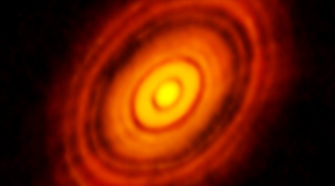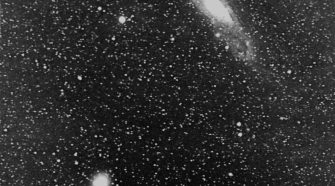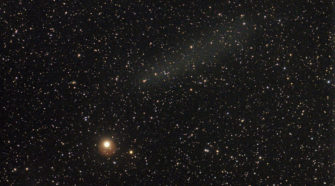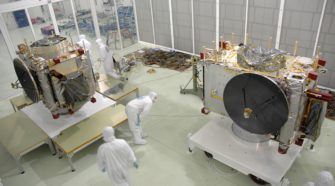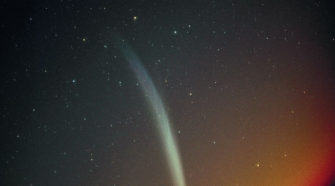This Week in History: November 1-7
NOVEMBER 1, 1577: Observers in Peru make the first sighting of the Great Comet of 1577. This comet, a brilliant object which is often referred to as “Tycho Brahe’s Comet” and which is one of the most important scientific comets in history, is next week’s “Comet of the Week.” NOVEMBER 1, 1948: Observers on the …
Comet of the Week: 17P/Holmes
Perihelion: 2007 May 4.50, q = 2.053 AU With the light pollution that is endemic to large metropolitan areas, it would seem difficult to believe that any significant astronomical observational activities could be conducted from cities like London these days. But things were different during the late 19th Century . . . On the evening of …
Special Topic: The Death of Comets
What happens to comets when they “die?” Our solar system has been around for 4.6 billion years, and, obviously, a large percentage of the comets that the solar system started off with are no longer with us. While many comets still remain in the reservoirs of the outer solar system, i.e., the Kuiper Belt and …
This Week in History: October 25-31
OCTOBER 25, 2020: Comet ATLAS C/2020 M3, discovered this past June 27 by the ATLAS survey in Hawaii, will pass through perihelion at a heliocentric distance of 1.268 AU. Comet ATLAS, which is a Halley-type object with an approximate orbital period of 139 years, has been unexpectedly bright (8th magnitude) lately, and may become even …
Comet of the Week: Ikeya-Seki 1965f
Perihelion: 1965 October 21.18, q = 0.008 AU What would prove to be the 20th Century’s brightest comet was discovered on the morning of September 18, 1965 – in a sky recently swept clean by a typhoon – by two Japanese amateur astronomers, Kaoru Ikeya and Tsutomu Seki (both of whom were veteran comet discoverers), independently …
Special Topic: Kreutz Sungrazers
The Great Comet of 1882 – a recent previous “Comet of the Week” – attracted a lot of attention from around the world from both astronomers and the lay public. One of the many interesting facets of this comet had been its very small perihelion distance, just a few hundred thousand km above the solar …

